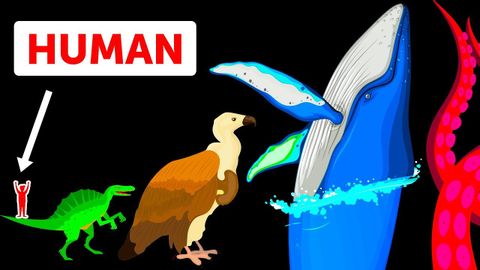地球上に存在する11種類の最大の生物 (11 Largest Creatures Ever Existed on Earth)
林宜悉 が 2021 年 01 月 14 日 に投稿  この条件に一致する単語はありません
この条件に一致する単語はありませんUS /ɪˈnɔrməs/
・
UK /iˈnɔ:məs/
US /ˈslaɪtli/
・
UK /ˈslaɪtli/
US /mɪˈtæbəˌlɪzəm/
・
UK /məˈtæbəlɪzəm/
US /ˈenʃənt/
・
UK /'eɪnʃənt/
エネルギーを使用
すべての単語を解除
発音・解説・フィルター機能を解除

